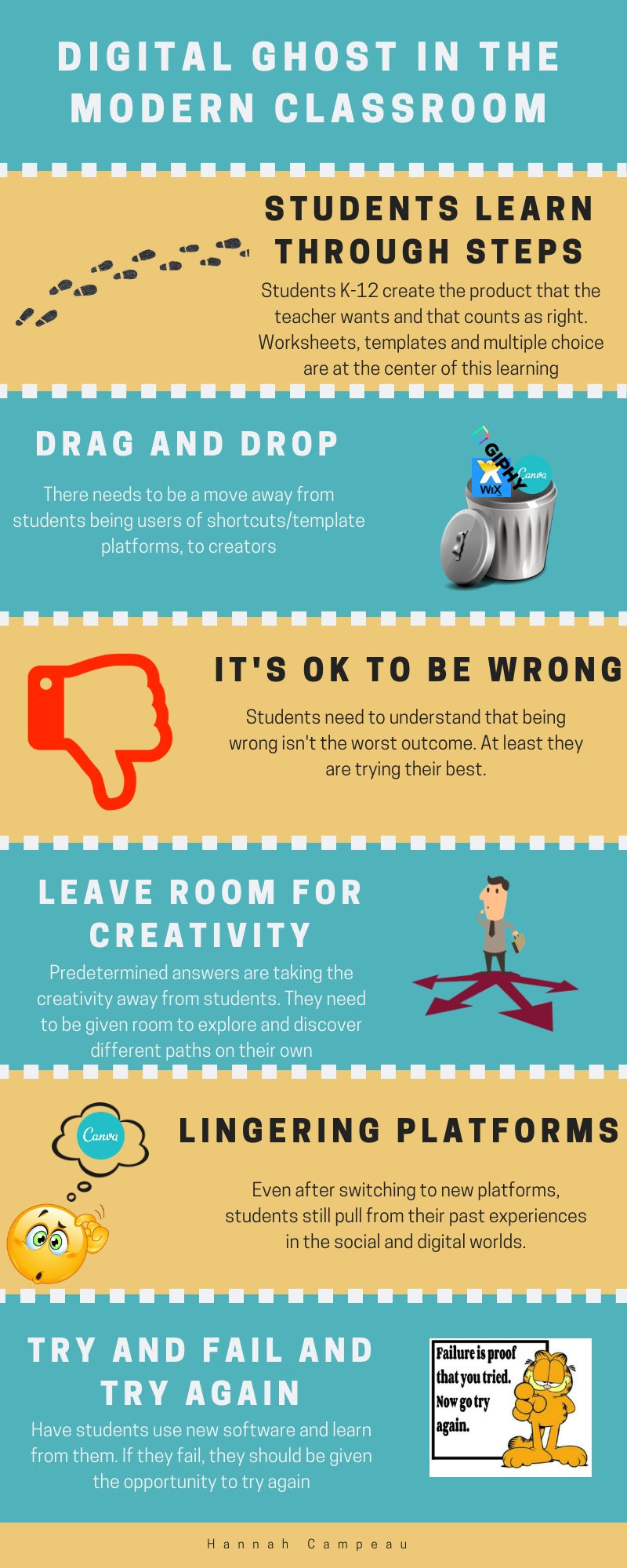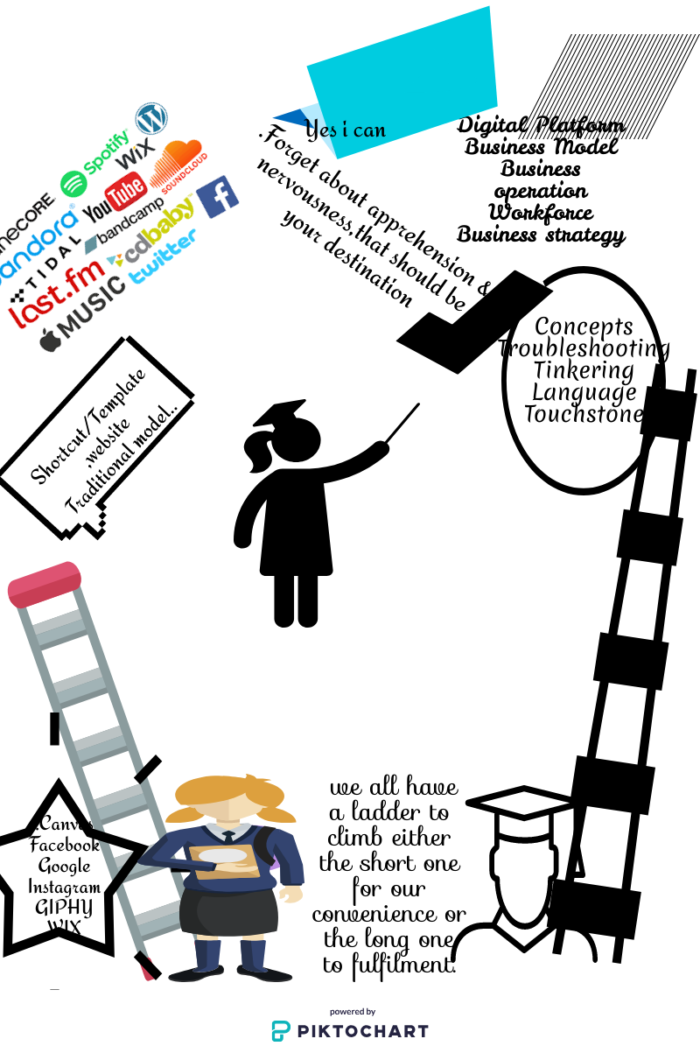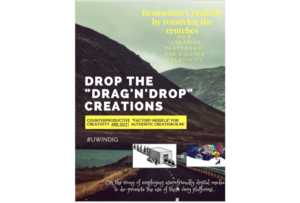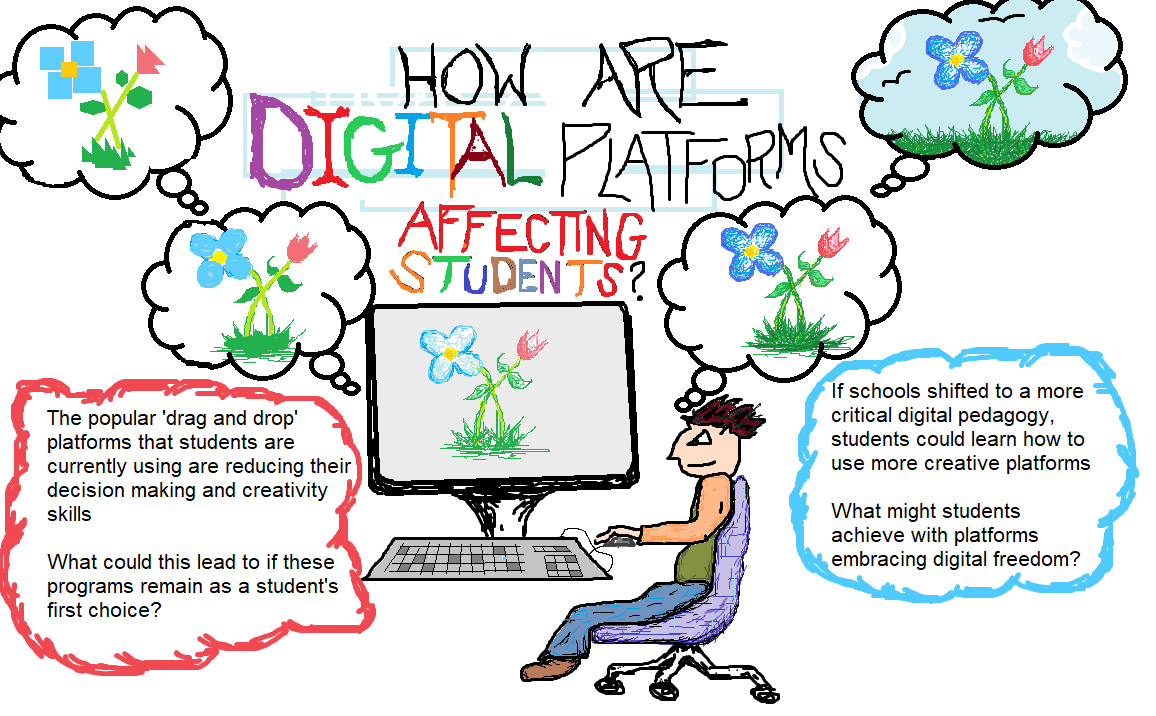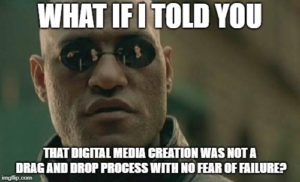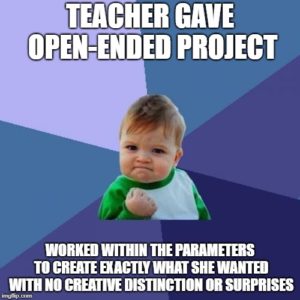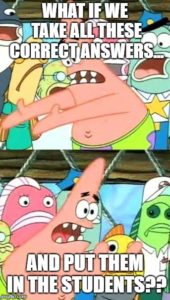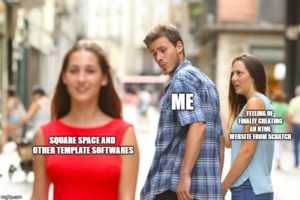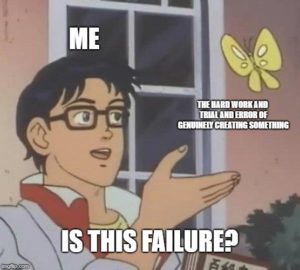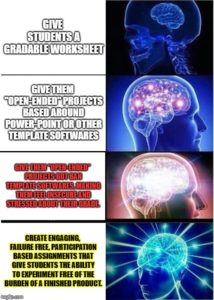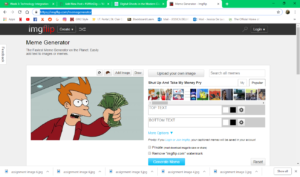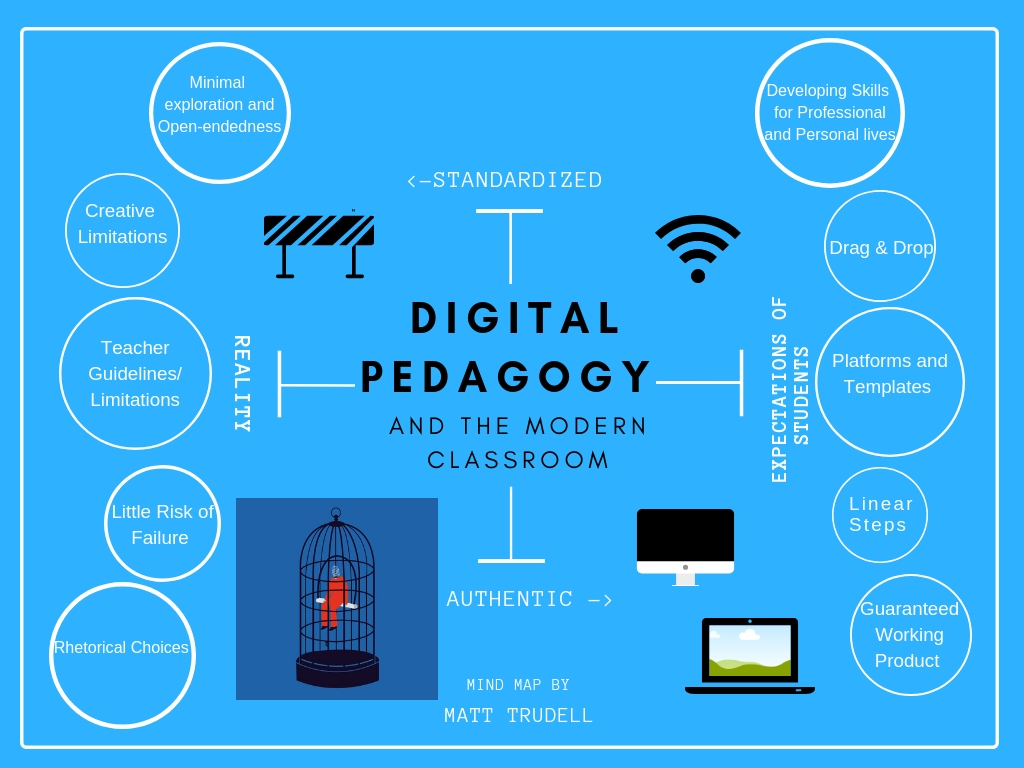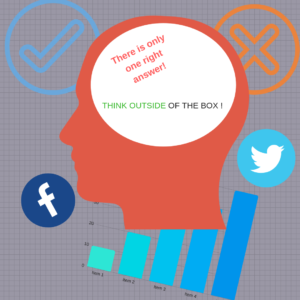I chose to read Ashley Hinck’s article ‘Digital Ghost in the Modern Classroom‘. This article talks about how teachers have been incorporating more and more technology into their classroom. According to Hinck, classrooms have yet to leap from the standardized education. Teachers are simply replacing the paper and pencils with a digital templates. The article explores how shortcuts and template websites and platforms influence students while in the classroom and in their everyday lives. When the students are given a platform with shortcuts and templates allows students to complete their work as long as it’s in the predetermined spaces within their selected template.
I chose to summarize this article using a canva template. I chose this because I wanted to attempt to stay within the the predetermined template. Through this process, I realized that it was difficult to formulate what I wanted to say about the article. I believe that to truly integrate digital technologies into the classroom where they can truly benefit students, we (as teachers) need to provide them with the opportunity to explore and create. When gearing away from template based platforms will most likely result in failure but it is important to understand that failure is necessary in the process of learning. Shifting from template based learning to active exploration will help shift from standardized to authentic education.
